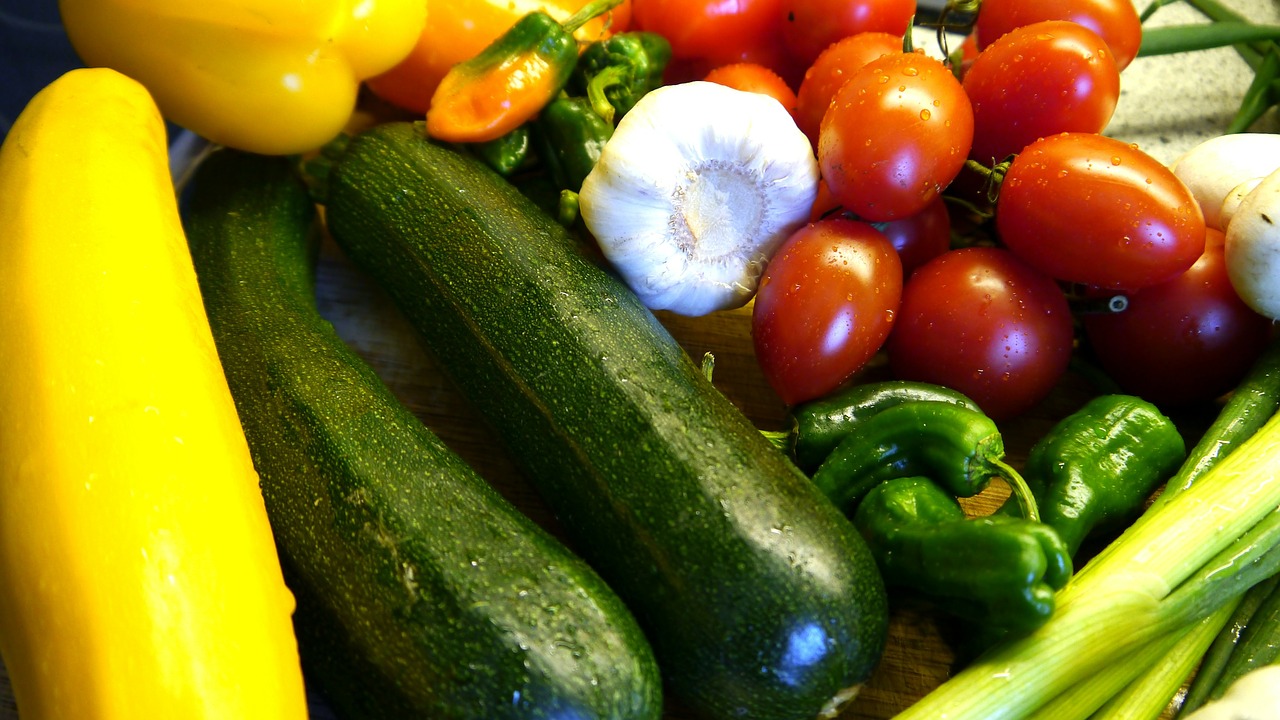This one was surprisingly difficult to research, partially because I remembered things I read years ago and tried to find them again and could not.
I remember reading that zucchini has higher amounts of riboflavin and vitamin K than yellow squash, however, I could not find that information anywhere. Pretty much every source I’ve looked at maintains that the nutritional value of the two are the same, so I suppose that is what I shall have to go with. If you know of a reliable source indicating any difference in nutritional value between the two, please comment and let me know!
Now then, let us first look at the similarities between zucchini and yellow squash, which are many:
- They are both a type of summer squash.
- They can be used interchangeably in recipes, including substituting yellow squash for zucchini in zucchini bread.
- They are relatively the same shape and size (except for the crookneck variety of yellow squash, which is more, well, crooked).
- Both are high in water content, in addition to having virtually the same nutritional value.
- Both have a very mild flavor, enabling them to pair well with many other ingredients in dishes.
Zucchini is typically a deep green, sometimes almost black. Although, just to confuse things, there is a golden zucchini variety which has a yellow hue. However, for the most part, the main (rather obvious) difference between zucchini and yellow squash is the color.
The primary difference between zucchini and yellow squash, besides the color, is that yellow squash has more seeds – this is according to LiveStrong.com, as well as a trusted food columnist contributor commenting on Food52.com; LiveStrong.com also believes that yellow squash has more of a “buttery” flavor to it.
Melissa Clark, a food columnist for The New York Times, and contributor to Food52.com, says about substituting yellow squash for zucchini that, “The only thing is that summer squash tends to have more seeds, and often larger seeds, than zucchini, so look for small ones.”
Burpee.com seems to agree with the notion of choosing slightly smaller yellow squash; according to this site, yellow squash should be harvested when six to eight inches in length, and zucchini when eight inches long.
So, there you have it: zucchini is green and contains less seeds than it’s yellow counterpart. The difference in flavor and nutrients must inevitably differ somewhere, but it is nearly imperceptible.

Comments
8 responses to “Difference between: zucchini and yellow squash”
I never really understood why you are allowed to use zucchini for sweet breads and muffins, but never regular squash. They are virtually the same thing and I use them interchangeably – except for desserts! Of course, yellow squash is a whole family of different varieties on its own…. crookneck, pattypan, etc. 🙂
There has to be more of a significant difference. I’m allergic to zucchini, but not yellow squash. As in, my lips, tonsils, throat, esophagus, and stomach swell and bleed after I eat zucchini, but nothing happens when I eat squash. I also have the same, rather violent, allergic reaction to eggplant.
That is fascinating. I wonder if maybe a doctor or a nutritionist could shed more light on the topic.
I can tell a great deal of difference but can’t really explain exactly. I do not care for zucchini. It is somewhat like green watermelon. Smell a fresh raw slice of each and you should be able to tell the difference. The yellow has a much more pronounced flavor and firmer texture when cooked. Of course I am referring to those fresh out of the garden.
i cant tell any deference between the them! love them both!
They recommend picking at 8 inches, most of my yellow squash are double and a few triple that size. The size doesn’t seem to affect taste.
I have fresh specimens, both picked and still on the plant if there is a way to show them.
Thanks for sharing this helpful information.